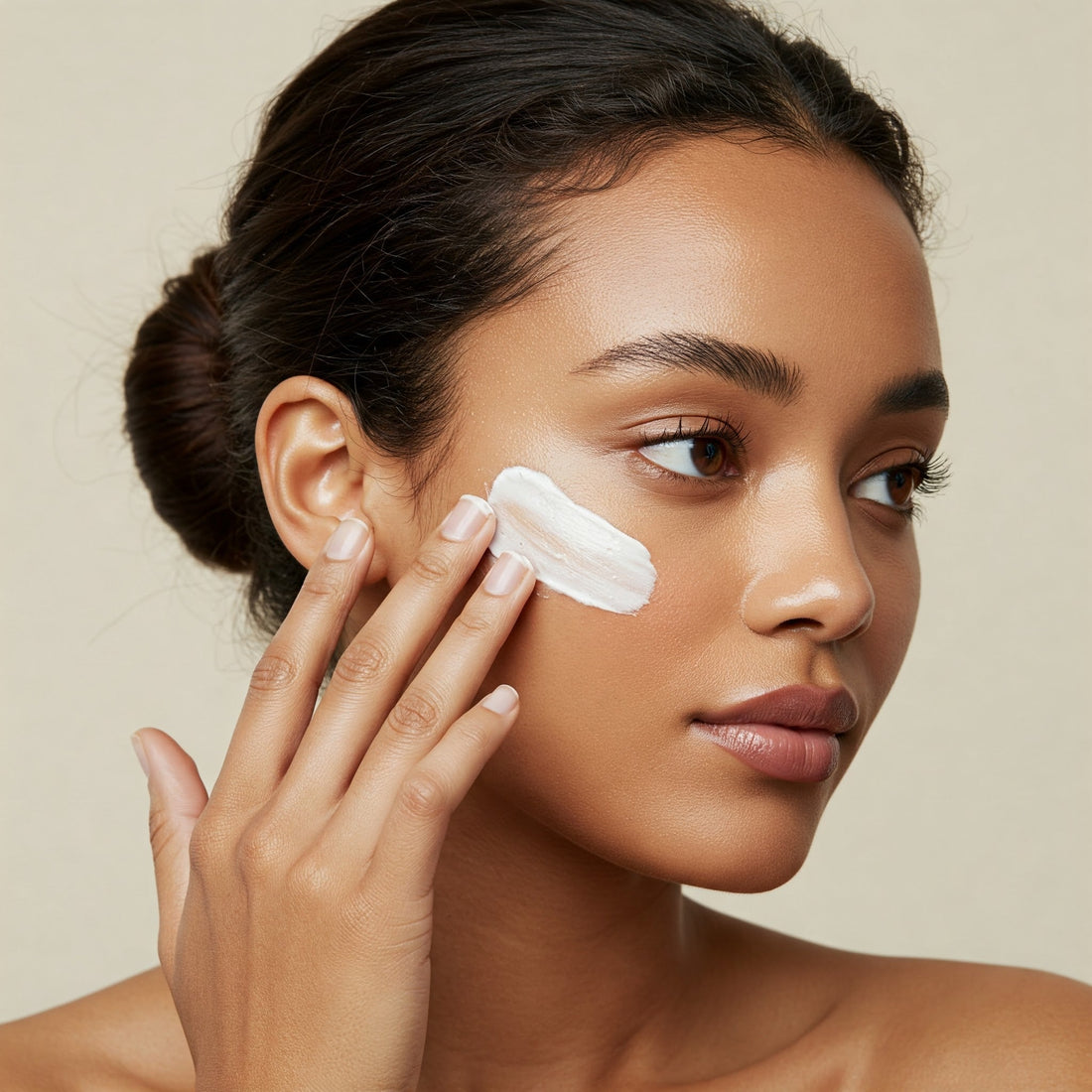What is Non-Comedogenic Sunscreen?
Non-comedogenic sunscreen is formulated to prevent clogged pores, making it ideal for acne-prone and oily skin. The term "non-comedogenic" means that the product does not contain ingredients that block pores or cause comedones (blackheads and whiteheads). Many regular sunscreens contain oils and heavy ingredients that may exacerbate breakouts, making non-comedogenic formulas essential for clear skin.
Sunscreen is a must-have in skincare to shield against harmful UVA and UVB rays. Without proper protection, prolonged sun exposure can lead to skin damage, premature aging, and hyperpigmentation. Non-comedogenic sunscreens offer all the sun protection benefits without causing breakouts, making them suitable for those struggling with acne and sensitive skin.
Best Non-Comedogenic Sunscreen in India
Non-Comedogenic Sunscreen with SPF 50 – Personal Touch Skincare
Key Features:
- SPF 50 PA++++ for superior sun protection.
- 3-in-1 protection: Blue light, infrared, and pollution defense.
- Non-comedogenic, lightweight, and matte-finish formula.
- Contains ZinClear XP65COCO for a non-whitening, transparent finish.
- Water-resistant and long-lasting protection.
Key Ingredients & Their Benefits:
- Zinc Oxide & Titanium Dioxide – Provide broad-spectrum protection, preventing UVA/UVB-induced skin damage.
- Bemotrizinol – A powerful UV filter offering long-lasting protection without irritation.
- ZinClear XP65COCO – A specialized non-whitening zinc oxide for a smooth, matte finish.
How to Use?
- Apply generously 15-20 minutes before sun exposure.
- Reapply every 2 hours for prolonged sun exposure or after swimming/sweating.
- Suitable for daily use under makeup.
How Many Types of SPF?
SPF (Sun Protection Factor) is classified into three main types:
- Mineral Sunscreens (Zinc Oxide & Titanium Dioxide): Create a physical barrier against UV rays.
- Chemical Sunscreens (Oxybenzone, Avobenzone, etc.): Absorb UV rays and convert them into heat.
- Broad-Spectrum Sunscreens: Offer both UVA and UVB protection, ensuring complete sun defense.
SPF ratings vary from 15 to 50+; the higher the SPF, the better the protection. PA++++ indicates superior UVA protection, making it ideal for prolonged sun exposure.
Differences Between SPF Levels?
- SPF 15: Blocks 93% of UVB rays.
- SPF 30: Blocks 97% of UVB rays.
- SPF 50: Blocks 98% of UVB rays. Higher SPF provides better protection but must be reapplied for continued efficacy.
What Level of SPF Do You Need?
- For daily indoor exposure: SPF 30 is sufficient.
- For outdoor activities & prolonged sun exposure: SPF 50 is recommended.
- For sensitive skin prone to sunburns: Always opt for SPF 50 PA++++.
Benefits of ThatMatt Sunscreen Lotion SPF 50 PA++++
- Protects against UVA, UVB, blue light, and infrared radiation.
- Prevents premature aging, sunburn, and hyperpigmentation.
- Non-comedogenic, lightweight, and leaves no white cast.
- Hydrates while providing a matte finish.
- Formulated for all skin types, including oily and acne-prone skin.
When To Use ThatMatt Non-Comedogenic SPF 50 PA++++?
- Before heading outdoors (beach, trekking, long exposure).
- Near reflective surfaces (water, snow, glass).
- On cloudy days (UV rays penetrate clouds).
- Indoors (protects from blue light emitted by screens).
Why Choose ThatMatt Non-Comedogenic Sunscreen Lotion SPF 50?
- Unique blend of physical and chemical UV filters.
- Infused with “Sunstalker Korea 3-in-1” technology for blue light, infrared, and pollution protection.
- Non-comedogenic formula prevents clogged pores and acne breakouts.
- Lightweight and quick-absorbing, leaving no greasy residue.
What Does Non-Comedogenic Sunscreen Mean?
Non-comedogenic sunscreen is formulated to prevent pore blockage, reducing the risk of acne and breakouts. It is ideal for oily and acne-prone skin, ensuring protection without irritation.
How Do Non-Comedogenic Sunscreens Work?
They contain lightweight, non-clogging ingredients that allow the skin to breathe while providing broad-spectrum UV protection.
How Does Non-Comedogenic Sunscreen Benefit Skin Pores?
It reduces excess oil buildup, minimizes acne flare-ups, and provides hydration without clogging pores.
Are Non-Comedogenic and Oil-Free the Same?
Not necessarily. Oil-free products contain no oils, while non-comedogenic products are designed to prevent pore blockages, even if they contain certain oils.
Benefits of Non-Comedogenic Sunscreen
- Reduces acne breakouts.
- Controls excess oil production.
- Provides effective sun protection without clogging pores.
FAQs:
- Is SPF 50 necessary for daily use? – Yes, especially in India’s climate.
- Can non-comedogenic sunscreen prevent acne? – Yes, by preventing clogged pores.
- How often should I reapply sunscreen? – Every 2 hours or after sweating/swimming.
- What’s the difference between mineral & chemical sunscreen? – Mineral sunscreens create a barrier, while chemical ones absorb UV rays.
- Can sunscreen expire? – Yes, check the expiry date before use.
- Is this sunscreen suitable for sensitive skin? – Yes, it’s dermatologically tested.
- What do the ++++ mean in PA++++? – Indicates superior UVA protection.
- What are the benefits of Zinc Oxide and Titanium Dioxide? – They provide broad-spectrum protection.
- Can I use this sunscreen under makeup? – Yes, it works as a primer.
- Does blue light from screens damage skin? – Yes, contributing to premature aging and pigmentation.
Conclusion
Using a non-comedogenic sunscreen like ThatMatt Sunscreen Lotion SPF 50 PA++++ is essential for protecting the skin while preventing clogged pores and acne. With its advanced formula, this sunscreen ensures broad-spectrum protection against UVA, UVB, blue light, and pollution. Make it a part of your daily skincare routine to maintain healthy, radiant skin.


